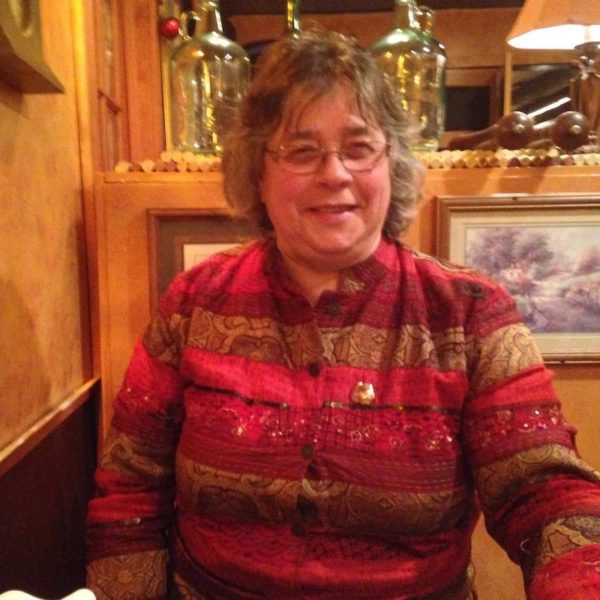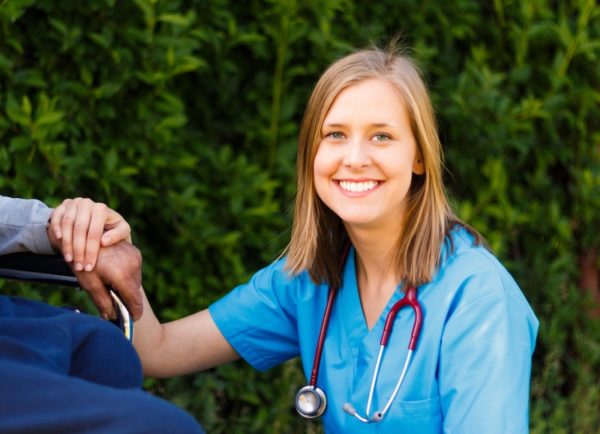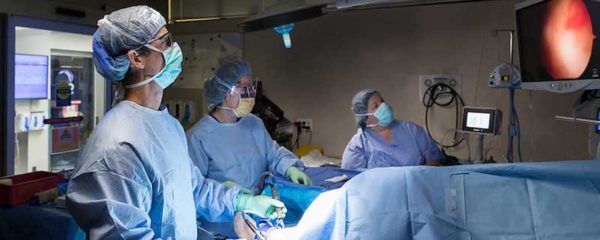Anne Perry thought she wanted to be a doctor. Two years into med school (this was back in the 60s) she spent a summer working in a teaching hospital. That’s when she had second thoughts about her career choice. The doctors she observed seemed to distance themselves from their patients and their approach was more disease than patient-focused.
“I wanted more of a relationship with patients,” she said. “I definitely had a more holistic idea of what healthcare was about and didn’t like just looking at a person’s disease. I wanted to see more than that. I decided I’d rather be a nurse.” She switched to a four-year nursing program. After 28 years of being a nurse (she retired in January 2018), Anne said it was one of her best decisions.
A nurse practitioner in primary care
She started her career as an obstetrics nurse in upstate New York. Over the course of 18 years, she worked in various capacities including outside the hospital, in the community. As a nurse social worker, she helped establish a local Head Start program. That led her to work with a group that started a family planning clinic. “I’m telling you this,” she said, “because nothing like nursing offers such a wide variety of opportunities.”
She’d always thought about becoming a nurse practitioner and when her family moved back to Maine in the 90s, she enrolled in a program at Husson University that allowed her to continue working and take classes Friday and Saturday. Three years later, at the age of 50, she was a licensed nurse practitioner.
Anne found a job in a primary care physician’s office in Calais, a small rural town in Down East Maine on the Canadian border. Exactly what she wanted. “I wanted a small community,” she explained. “I wanted to be part of that community. Not everybody wants that, some people like other challenges, but to me, it was important to be part of the community and get that holistic look at how can I best serve my patients. It was phenomenal because it allowed me to do something that I had envisioned myself doing as a doctor but ended up doing as a nurse.”
Working in that environment can also give nurses a wider view of things that might be happening in the community at large. A case in point is something that Anne noticed in the first two years of being a nurse practitioner in Calais. She had four patients with hepatitis C, which was more than she had seen in her previous two decades of nursing. She realized that the common denominator in the cases was drug use. “I called the Maine CDC and asked for the epidemiologist,” she said. “I told him who I was and where I was from and I said do you have any statistics on hepatitis C? His comment to me and I will never forget it, was, ‘Washington County? Boy, do you have a problem.’ As it turned out, we did have a problem because our hepatitis C rate went from two to five to 27.”
Anne and other members of the community banded together to bring addiction treatment resources to the area. Had she not connected the dots and taken a wider view, it may not have happened.
Nurses needed in rural Maine
Most of Maine is considered rural and in dire need of healthcare providers. Nurses, particularly advanced practice nurses, can help fill the gap. It’s especially critical as the state grapples with the looming shortage of nurses. As we looked at in part 1 of Nurses Needed, Maine could face a shortage of 3200 nurses by 2025 as the population ages and more people need more care. At the same time, the nursing workforce and nursing school faculty are also aging and (like Anne Perry) are starting to retire. In Washington County alone, 48 percent of the nursing workforce is on the verge of retirement.
Nursing “upstream” in the community
Jennifer Morton explained that since the Affordable Care Act was launched in 2011, there has been more of an emphasis on community-based nursing at the federal level. UNE is one of nine sites in the country that were awarded federal grants to create a pilot program for nursing students that integrates more community health.
For the past two years, UNE has run the Upstream Practicums in Nursing Program in partnership with Greater Portland Health. The federally qualified health center offers a wide array of healthcare services to people with and without health insurance. The term upstream comes from the United Kingdom, explained Jennifer. It means health promotion versus a downstream or disease management paradigm.
Twelve UNE nursing students have gone through the program. They all worked at the center, where, among other things, they learned how to coordinate and provide community-based primary care, how to try and prevent chronic diseases, and how to work as a team. Unfortunately, not everyone agrees with this approach to training nurses.
“An argument against it,” said Jennifer,” is that if nurses aren’t trained in the acute care setting where we’ve trained them since the beginning of time they won’t pass their licensure exam and they won’t be as skilled or as competent.”
She was quick to point out that all 12 of their students passed their boards the first time around as was the case for the other pilot programs. All of the programs are also compiling data to show that their approach to training nurses can work.
“I would definitely say that the workforce is going to need many more nurses who want to work in the community,” she said. “The fact that the federal government is putting some resources toward community nursing is a step in the right direction. Part of what they wanted to prove was that we could cultivate very skilled nurses by training them in the community. In other words, it’s not one or the other, it’s both. We really need to train nurses in a variety of settings, but if we train them in a community setting, they’re going to be just as skilled as they would be if they were trained in the acute care setting.”
Half of the 12 nurses who have graduated chose to work in an acute care setting and the other half in community settings. UNE is waiting to hear if the program will be re-funded. If not, they’ll find a way to keep it sustainable bare bones. If it is, UNE will expand the program’s reach. “We plan to add rural sites, do immersions with students, and send them up north,” said Jennifer. “That’s very new and innovative.”
At the same time, Dr. Dora Anne Mills, UNE’s Vice President for Clinical Affairs and Interim Vice President for Research and Scholarship, is waiting to hear about another nursing-related grant. It would allow the school to provide tech-based training for existing nurses in rural settings that have limited resources for development. “If we both get funded,” said Jennifer, “we’re going to be implementing that type of distance education with healthcare professionals across the state in rural areas. Professionals who wouldn’t otherwise be able to have the education.”
Where you’ll find community-based nurses
We’ve been talking mostly about nurses who are working in primary care settings. While that’s important, community nursing encompasses so much more. Any nurse who works outside the hospital — school nurses, home health and visiting nurses, hospice nurses, occupational health nurses, nurses who participate in community clinics, public health nurses, nurses who work in outpatient settings — are all practicing community-based nursing. (I’m sure I’ve missed some, so please feel free to comment at the end of this post.)
Laurie Dorr manages the OA Centers for Orthopaedics Surgery Center. Because their patients have surgery and go home the same day and everything related to their procedure is planned and executed outside the hospital setting, she and the nurses she works with can also be considered community-based nurses. She said that sometimes it’s a challenge to find nurses who are qualified to work in their OR.
“It takes a different set of skills to be a nurse outside a hospital setting,” she explained. “You’re free-standing. You have to be trained and ready for anything. New graduates often don’t have hands-on experience. I have an opening right now. If I found someone I thought might be close, I’d have to train them because they often can’t just jump into OR nursing.”
A new partnership between Maine Medical Center and St. Joseph’s College could serve as a model for the kind of specialty training that Laurie is talking about. Unfortunately, it won’t help with her situation.
Having more opportunities to do hands-on clinical training in various parts of the community (maybe even at ambulatory surgical centers like OA’s) is necessary for two reasons, said Lisa Harvey-McPherson. She’s co-chair of the Maine Nursing Action Coalition.
“Number one, that’s really the direction of where care is transitioning to,” she said.” And number two is because community nursing encompasses so much. “It’s important that nursing students have all these clinical experiences,” she said, “and to understand different practice environments.”
Options
No matter where nurses choose to practice, Anne Perry says it is a phenomenal profession because you can keep learning and move up the ladder. Or use your talents in another way. For example, she became a nurse practitioner and at the urging of her community, also ran for the state legislature. She currently represents Calais and several other communities in the House of Representatives. Until her recent retirement, she worked part-time as a nurse practitioner for Calais Regional Hospital’s Family Medical Services. The hospital gave her the leeway to see patients on weekends and to make house calls, continuing to give that one-on-one care that was so important to her from the beginning.
She laments the fact that there are too few nurse practitioners or even doctors in rural parts of Maine. She admits that it’s a challenging place to practice, but if you know that going in, you can succeed. “I think it takes a real understanding of what you can do and learning what you need to do,” she said.
At the end of the day, Anne finds that anyone who goes into nursing is committed to what he/she is doing, no matter where they choose to practice. “There are always some who do it better than others,” she said, “but most nurses when they find their niche, end up doing what they love doing.”
National Nurses Week
And no matter where you work and in what specialty or capacity, if you are a nurse, this is your week to be celebrated. May 6 to May 12 (2018) is National Nurses Week. Thank you for all the hard work you do.
Don’t be shy about saying thank you to a nurse who made a difference in your life. Either mention them in the comment section below this post or send me an email and I’ll add them to another blog post later this week.
Upcoming segments of Nurses Needed
The next segment of Nurses Needed runs Wednesday, May 9. I’ll explore a specific type of community nursing in Maine — our public health nursing system.
Friday, May 11, in honor of nurses week, we’re going to show our nurses a little love. If you have a story you’d like to share about a Maine nurse, send it to me.
Monday, May 14, we’ll wrap things up with a look back at the history of nursing in Maine.




Leave A Comment